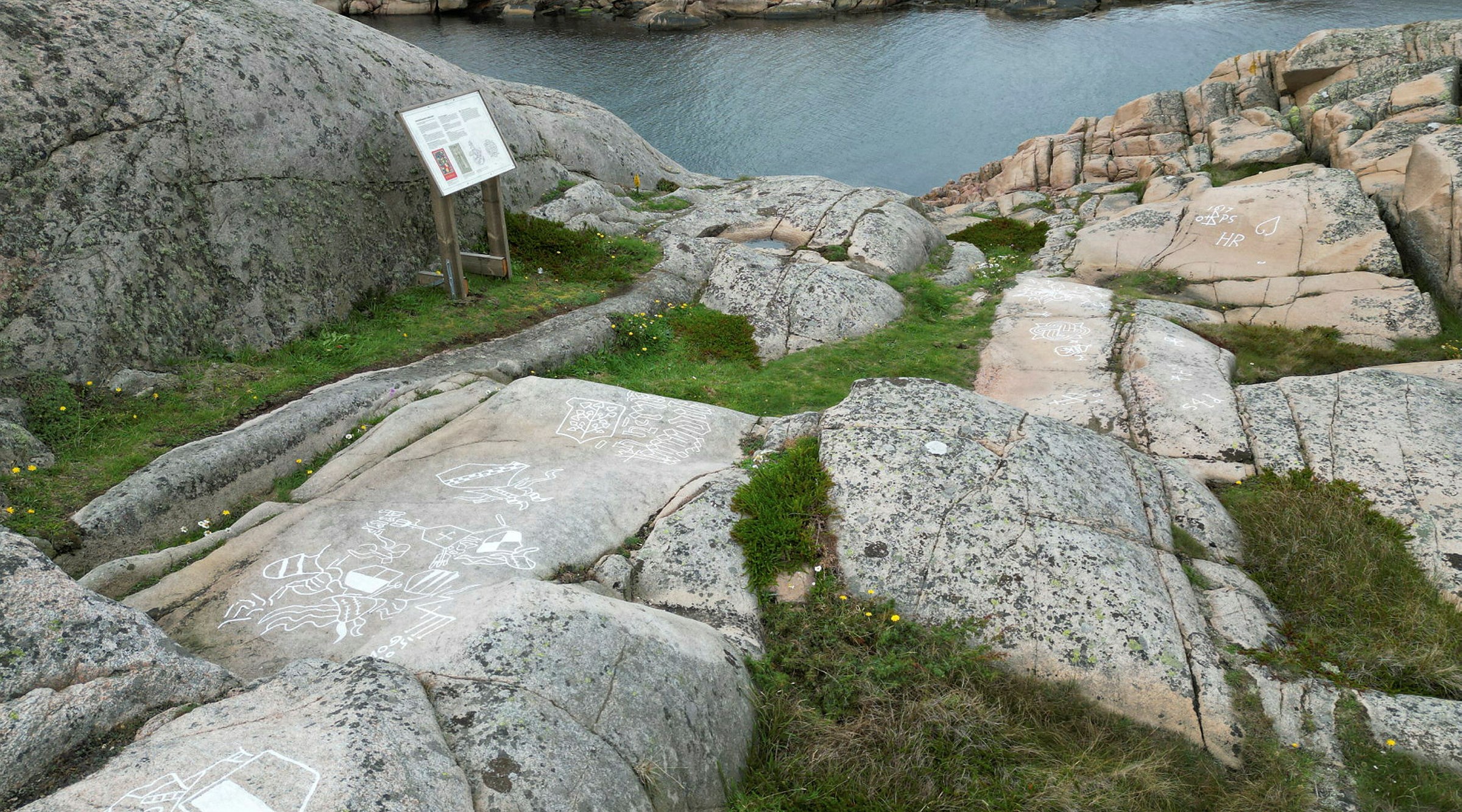Maritime rock carvings in West Sweden

It was not only Bronze Age people who carved figures in the rocks in Bohus county. Seafarers in the 16th and 17th centuries also carved their marks, initials, the year, compass roses and shields when they visited the natural harbours along the Bohus coast. Today we know of around twenty locations with maritime carvings, from Vinga in the south to Koster in the North.
You can find maritime carvings on the rocks by sheltered natural ports along the whole length of the Bohus coast. These natural ports were used as night-time and emergency ports for shipping from the Middle Ages until the 18th century, and the carvings were made by seafarers as a kind of visiting card.
Owners' marks as symbols
The most common maritime carvings are owners' marks, followed by the initials, the year, compass roses, place names, persons' names and shields of heraldry. Owners' marks are symbols used to show identity, origin, ownership or manufacturer. The practice of using owners' marks became more common during the Middle Ages, particularly among merchants. They achieved their highest popularity in the 16th century and beginning of the 17th century, and were used by all social classes: maids and servants, the nobility and farmers, fishermen, seamen, craftsmen, traders and – women.
During this time period, the shipping trade was very lively. Merchants from the Union of Denmark and Norway and others from the Hansa cities along the Baltic shores and the Netherlands sailed along the Bohus coast. Fishing, particularly during the herring period of 1556-1589, also attracted many fishermen and traders to Bohus county.
Traces of conflicts and trade
Wars and conflicts between Denmark, Norway and Sweden were more the rule than the exception until the beginning of the 19th century, so warships and navy fleets were almost certainly common sights in the archipelago. We believe that those who carved their marks in the natural ports were mainly merchants and seafarers, fishermen, the nobility and navy men.
You could argue that not much had happened since the Bronze Age, since the carvings from that period were essentially made by the same groups of people. Many of the images from that time can be linked to travel, trade and power. There is very little evidence of fishing in the images from the Bronze Age, however.
The oldest known maritime carvings are shields of the nobility dating back to the end of the 15th century. They are found on the Hamnholmarna in the Fjällbacka archipelago. After the shields, the next oldest known year carving is from 1500, which was discovered in 2014. There are plenty of year carvings from the 16th and 17th centuries, but only one or two from the 18th century. This is probably because ships were becoming larger and had better navigation instruments, and were then able to sail further out from the coast as well as at night. As a result, natural ports were not necessary in the same way as before.
Places with maritime carvings
There are about twenty places along the coast with maritime carvings, from Vinga in the south to Koster in the north. Many of these places coincide with the natural harbours marked out on old sea charts or descriptions in historical texts. Examples of such places are Mollösund and Käringön outside Orust, Buskären outside Smögen, Hamnholmarna outside Fjällbacka and Koster outside Strömstad. Maritime carvings are also found on Sörlandet and outside Trondheim in Norway, in Roslaget archipelago in Uppland and in the southern Finnish archipelago.
There are parallels that can be drawn in these places, too, with Bronze Age carvings. These days you can find them several kilometres from the coast, but at one time they were made in the archipelago landscape. This is because the sea level during the Bronze Age was up to 17 metres higher than today's level and land uplift slowly meant that the carvings became closer and closer to the land.
The group of islets called Hamnholmarna has the largest number of maritime carvings in Bohus county and is one of the largest places in all the Nordic countries, with several hundred carvings.
Contact
Do you want to know more about these maritime carvings? Feel free to contact Lars Strid.






